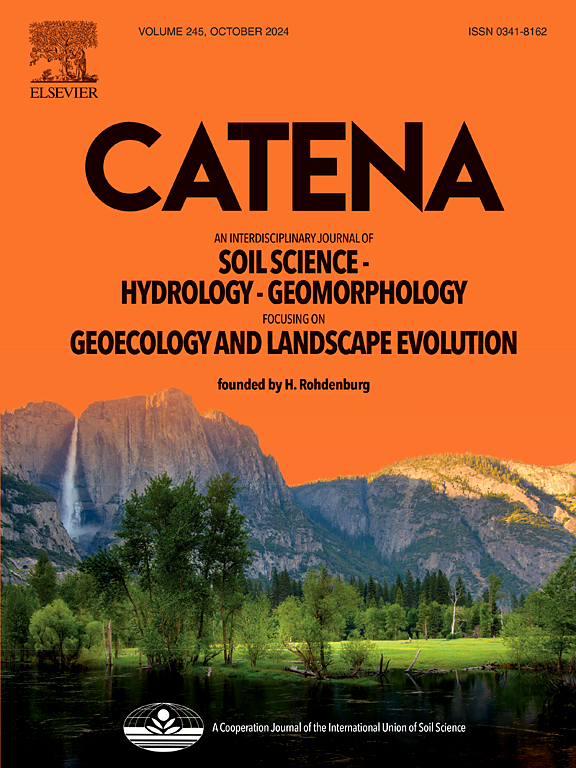Spring watering interactively improves aboveground net primary productivity and soil microbial biomass in a semi-arid grassland of China
Chen, Hao , Zhao, Xiaorong , Lin, Qimei , Li, Guitong , Kong, Weidong
2020-06-01 null null 189(卷), null(期), (null页)
An increasing number of studies have suggested a more important role of precipitation during specific segments of the year than annual amount in determining the aboveground net primary productivity (ANPP). In semi-arid grasslands of China, highly irregular distribution and intensity of precipitation supply induced by current climate changes often causes soil drought or water pulses in spring when plants are at their early growing stage. Here we tested the impact of spring precipitation supply on plant growth and nutrient uptakes, as well as dynamics of carbon (C), nitrogen (N), phosphorus (P) in soil microbial biomass (MB) and abiotic labile forms over the growing season in a semi-arid grassland of China. We conducted a spring rainfall-simulating experiment by manual watering (using drought plots as control) under field conditions from late April to May, and started sampling monthly from June to October. The results clearly showed that spring watering increased ANPP and microbial biomass C (MBC), and these effects were consistent throughout the entire growing season. Treatment effects can be detected in soil microbial biomass but not in abiotic labile pools. Throughout the growing season, soil water content and N availabilities were the main factors controlling soil microbial dynamics across treatments. Nevertheless, markedly higher microbial biomass P (MBP) and lower MB C:P ratio were observed in watering plots in September when plant P uptake had dropped down in watering plots but still kept increasing in drought plots. This suggested a delay of phenological period of plants induced by spring drought and P competition existing between plants and microorganisms. Overall, the present work highlights the importance of spring precipitation and provides implications for understanding current and future ANPP variations. In addition, we suggest to use MBC as a good soil indicator for soil fertility and plant productivity under changing seasonal precipitation patterns.
相关推荐
- Effects of forest age and stand density on the growth, soil moisture content, and soil carbon content of Populus simoni plantations in the sandy area of western Liaoning, Northeast China [2020-06-01]
- Using SAR imagery to extract flash flood sediment deposition area in the northern Loess Plateau [2020-06-01]
- An Evaluation of Evapotranspiration Products over the Tibetan Plateau [2020-06-01]
- Changes in preferential flow caused by root effects in black locust plantations of different stand ages in the semi-arid region of the Loess Plateau [2020-06-01]
- Assessing the Spatiotemporal Variations in the Hydrological Response of the Qin River Basin in Loess Plateau, China [2020-06-01]



